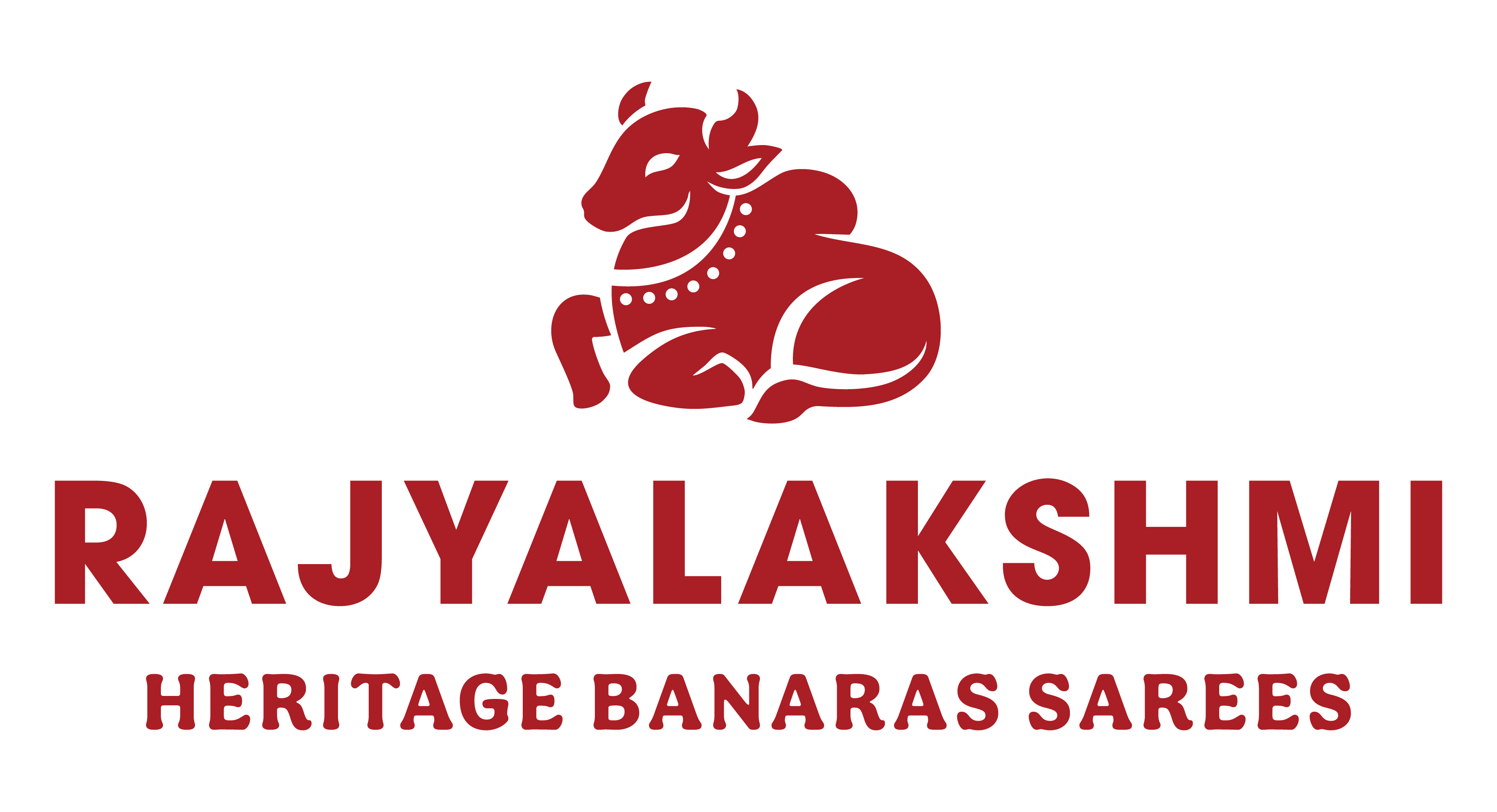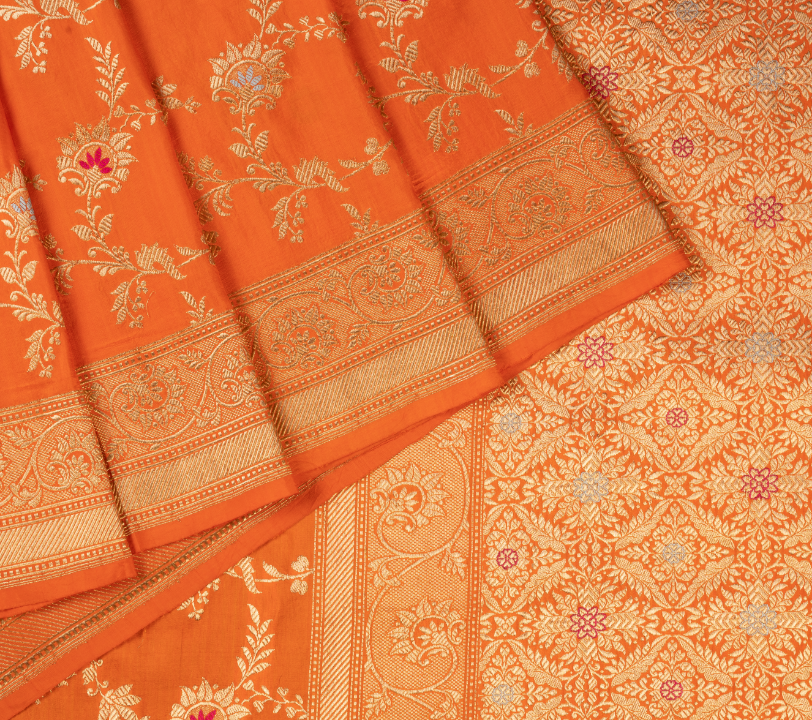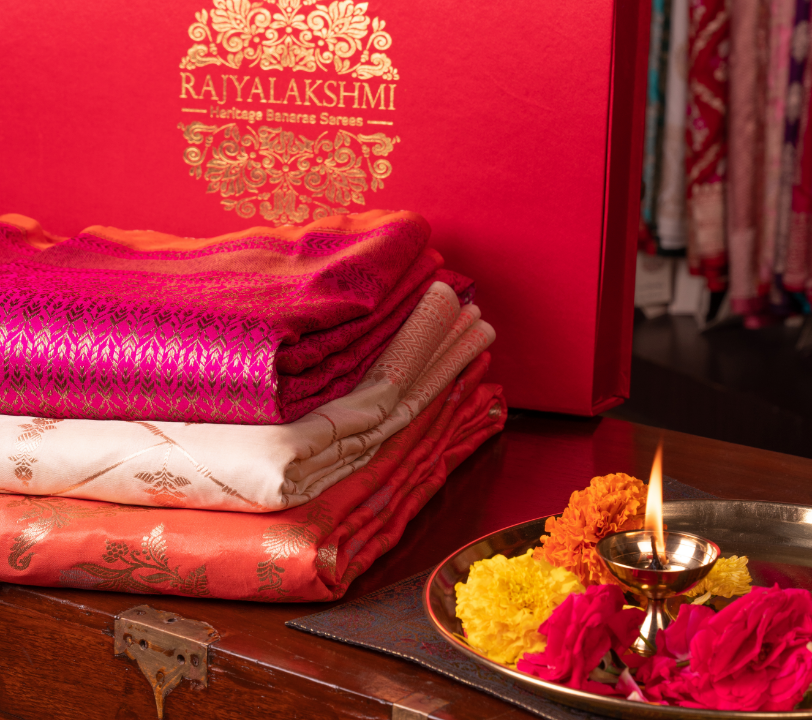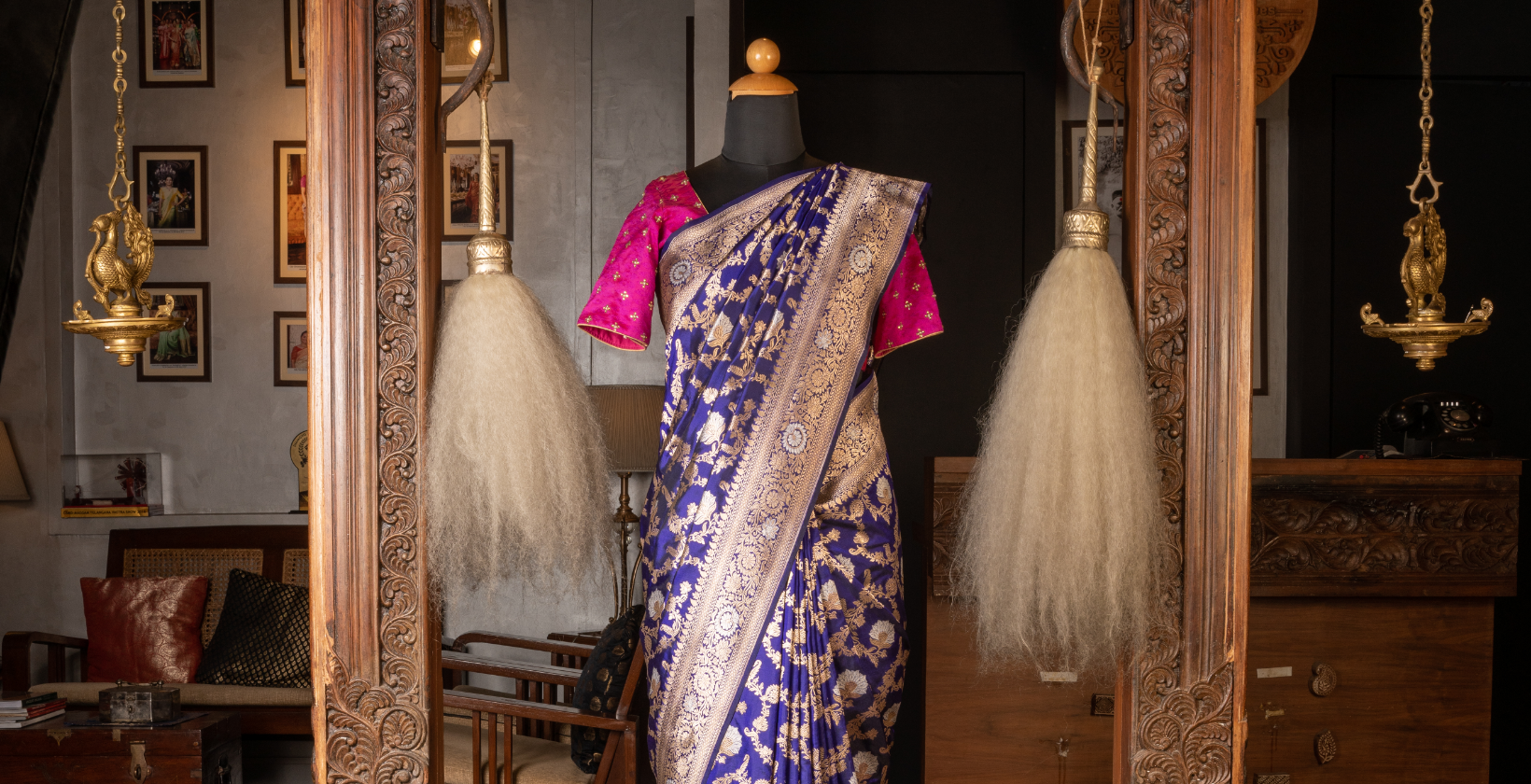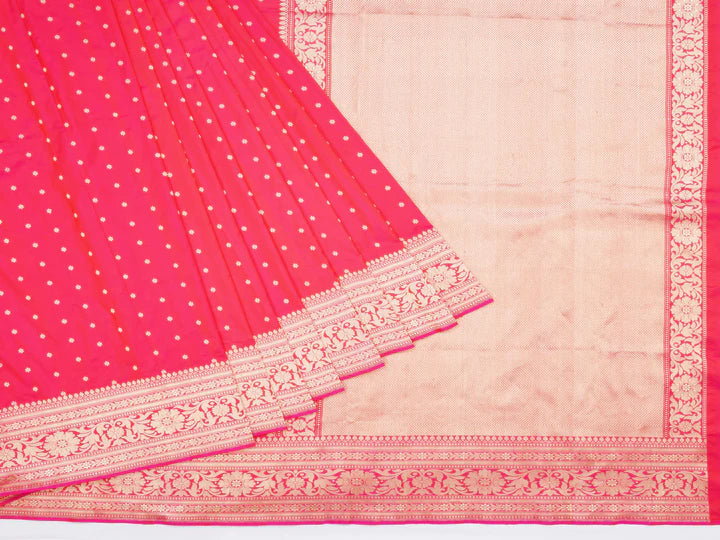
Step into the world of exquisite Indian attire and discover the allure of the pure Banarasi saree. These sarees are like a piece of art, woven with skill and love in the city of Varanasi. They are not just clothes; they are a symbol of the past, present, and future.
A Glimpse into History: The Origins of Banarasi Sarees
The saga of Banarasi sarees finds its roots in antiquity. Emerging from the looms of skilled weavers who originally migrated from Gujarat to Banaras, this unique weaving tradition has been nurtured through the ages. Nestled in the heart of Varanasi, a city steeped in cultural opulence, these sarees carry within them the enduring legacy of countless generations. Drawing inspiration from the intricate patterns of the Mughal designs, Banarasi sarees emerged as a medium to both preserve and exalt India's artistic heritage.
Crafting Elegance: The Making of Banarasi Sarees
Creating a Banarasi saree is a labour of love. Talented weavers use traditional techniques to craft these masterpieces. The fabric, often silk, is carefully chosen for its quality. The weaving process involves adding real gold or silver threads to the design, giving the saree its distinctive shimmer. The result is a tapestry of artistry, history, and beauty.
The motifs and designs that grace Banarasi sarees are adorned with a strong Persian influence. These intricate patterns pay homage to a rich cultural exchange, infusing the sarees with a timeless allure that mirrors the splendour of Persian artistry. This fusion of cultures enriches the narrative of Banarasi sarees, making them a testament to the interconnectedness of creative expressions.
The Art of Crafting Banarasi Sarees
Crafting a Banarasi saree is an intricate labour of love. It involves the meticulous handwork of skilled artisans, transforming each saree into a masterpiece of craftsmanship. The process, encompassing the Kadwa, Jaal, and Shikargah weaves among others, is characterised by its time-consuming nature and intricate detailing. These very aspects render Banarasi sarees amongst the most coveted and valuable weaves, carrying with them a legacy of dedication and precision.
From Royal to Contemporary: The Journey of Banarasi Sarees
Under the embrace of Mughal dominion, Banarasi sarees flourished with unparalleled splendour. Crafted for royalty, these sarees carved an indelible link between opulence and their identity, a bond that remains unbroken even in contemporary times. The regal essence of the Mughal era continues to resonate through the threads of Banarasi sarees, embodying the grandeur that has transcended through the ages.
Mastery to Modernity
The mastery of crafting Banarasi sarees has been honed and passed down through generations. However, the contemporary landscape witnesses the advent of power looms, heralding a new era of mass production. As tradition grapples with modernity, the age-old art of handcrafting these sarees faces the challenge of preserving its intricate legacy amidst the tide of industrialization.
Rajyalakshmi's Promise: Preserving the Heritage of Banarasi Sarees
Banarasi sarees are more than just fabric; they are a journey through time, culture, and artistry. With a history that spans centuries, these sarees hold stories of tradition and craftsmanship. Whether it's the regal charm of the bridal Banarasi saree, the delicate details of the original Banarasi saree, these sarees keep the magic alive in the threads of tradition.
We are committed to not only celebrate, but also to preserve this heritage of authentic Banarasi sarees. With a deep-rooted passion for preserving the legacy of these intricate weaves, Rajyalakshmi stands as a custodian of tradition, ensuring that the artistry and elegance of Banarasi sarees continue to thrive in the modern world.
